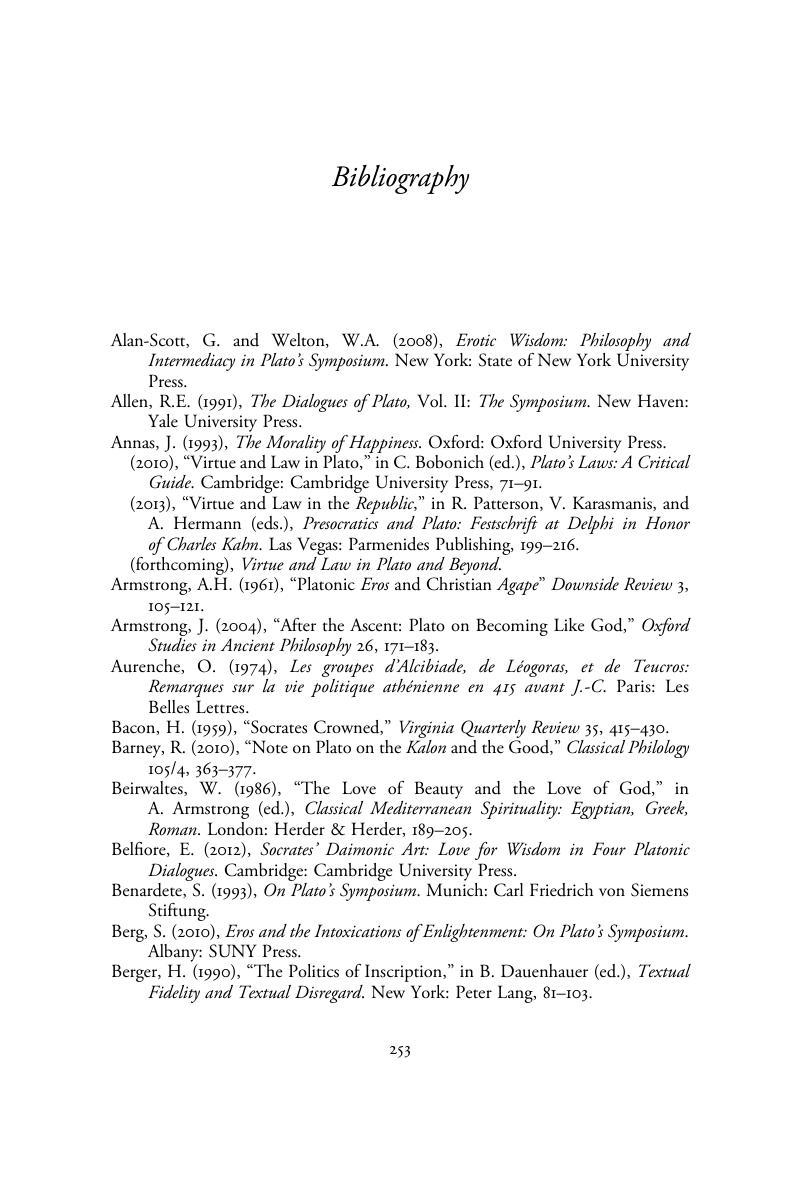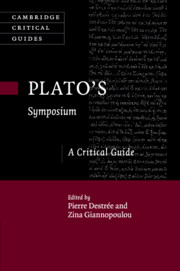Book contents
- Plato’s Symposium
- Cambridge Critical Guides
- Plato’s Symposium
- Copyright page
- Contents
- Contributors
- Introduction
- Chapter 1 Narrative Temporalities and Models of Desire
- Chapter 2 Unfamiliar Voices: Harmonizing the Non-Socratic Speeches and Plato’s Psychology
- Chapter 3 A Doctor’s Folly: Diagnosing the Speech of Eryximachus
- Chapter 4 Aristophanic Tragedy
- Chapter 5 Divinization
- Chapter 6 Why Agathon’s Beauty Matters
- Chapter 7 Erōs and the Pursuit of Form
- Chapter 8 The Mortal Soul and Immortal Happiness
- Chapter 9 A Fetish for Fixity?
- Chapter 10 Generating in Beauty for the Sake of Immortality: Personal Love and the Goals of the Lover
- Chapter 11 Alcibiades the Profane: Images of the Mysteries
- Chapter 12 How Does Contemplation Make You Happy?
- Chapter 13 Eudaimonism and Platonic erōs
- Bibliography
- Index locorum
- Index
- Titles published in this series:
- References
Bibliography
Published online by Cambridge University Press: 30 August 2017
- Plato’s Symposium
- Cambridge Critical Guides
- Plato’s Symposium
- Copyright page
- Contents
- Contributors
- Introduction
- Chapter 1 Narrative Temporalities and Models of Desire
- Chapter 2 Unfamiliar Voices: Harmonizing the Non-Socratic Speeches and Plato’s Psychology
- Chapter 3 A Doctor’s Folly: Diagnosing the Speech of Eryximachus
- Chapter 4 Aristophanic Tragedy
- Chapter 5 Divinization
- Chapter 6 Why Agathon’s Beauty Matters
- Chapter 7 Erōs and the Pursuit of Form
- Chapter 8 The Mortal Soul and Immortal Happiness
- Chapter 9 A Fetish for Fixity?
- Chapter 10 Generating in Beauty for the Sake of Immortality: Personal Love and the Goals of the Lover
- Chapter 11 Alcibiades the Profane: Images of the Mysteries
- Chapter 12 How Does Contemplation Make You Happy?
- Chapter 13 Eudaimonism and Platonic erōs
- Bibliography
- Index locorum
- Index
- Titles published in this series:
- References
Summary

- Type
- Chapter
- Information
- Plato's SymposiumA Critical Guide, pp. 253 - 263Publisher: Cambridge University PressPrint publication year: 2017



